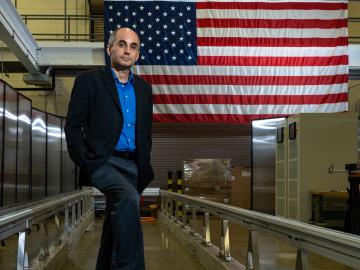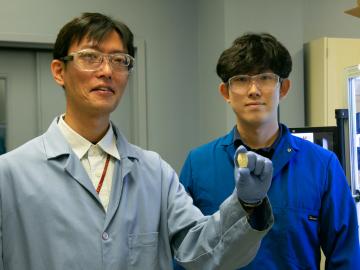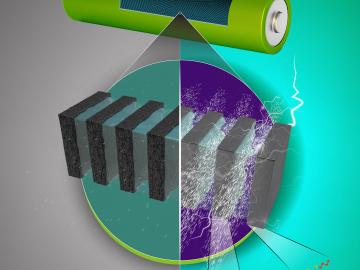
Filter News
Area of Research
News Type
News Topics
- (-) Advanced Reactors (4)
- (-) Biomedical (6)
- (-) Cybersecurity (7)
- (-) Materials (35)
- (-) Neutron Science (12)
- (-) Quantum Science (9)
- (-) Simulation (5)
- (-) Transportation (10)
- 3-D Printing/Advanced Manufacturing (11)
- Artificial Intelligence (12)
- Big Data (8)
- Bioenergy (19)
- Biology (28)
- Biotechnology (3)
- Buildings (15)
- Chemical Sciences (15)
- Clean Water (5)
- Composites (3)
- Computer Science (19)
- Coronavirus (9)
- Critical Materials (4)
- Element Discovery (1)
- Energy Storage (23)
- Environment (35)
- Exascale Computing (7)
- Fossil Energy (1)
- Frontier (9)
- Fusion (7)
- Grid (12)
- High-Performance Computing (14)
- Hydropower (8)
- Irradiation (1)
- Isotopes (4)
- ITER (2)
- Machine Learning (9)
- Materials Science (15)
- Mercury (1)
- Microscopy (13)
- Nanotechnology (9)
- National Security (17)
- Nuclear Energy (10)
- Partnerships (8)
- Physics (10)
- Polymers (5)
- Quantum Computing (7)
- Security (4)
- Space Exploration (4)
- Summit (6)
Media Contacts

Scientists at ORNL used neutron scattering to determine whether a specific material’s atomic structure could host a novel state of matter called a spiral spin liquid.

Chemical and environmental engineer Samarthya Bhagia is focused on achieving carbon neutrality and a circular economy by designing new plant-based materials for a range of applications from energy storage devices and sensors to environmentally friendly bioplastics.

Though Nell Barber wasn’t sure what her future held after graduating with a bachelor’s degree in psychology, she now uses her interest in human behavior to design systems that leverage machine learning algorithms to identify faces in a crowd.

Burak Ozpineci, a Corporate Fellow and section head for Vehicle and Mobility Systems Research at Oak Ridge National Laboratory, is one of six international recipients of the eighth Nagamori Award.

To solve a long-standing puzzle about how long a neutron can “live” outside an atomic nucleus, physicists entertained a wild but testable theory positing the existence of a right-handed version of our left-handed universe.

ORNL researchers have developed an upcycling approach that adds value to discarded plastics for reuse in additive manufacturing, or 3D printing.

Researchers at Oak Ridge National Laboratory are using state-of-the-art methods to shed light on chemical separations needed to recover rare-earth elements and secure critical materials for clean energy technologies.

New polymer materials under development at Oak Ridge National Laboratory could enable safer, more stable batteries needed for electric vehicles and grid energy storage.

Researchers at Oak Ridge National Laboratory and Korea’s Sungkyunkwan University are using advanced microscopy to nanoengineer promising materials for computing and electronics in a beyond-Moore era.

Adrian Sabau of the Department of Energy’s Oak Ridge National Laboratory has been named an ASM International Fellow.


